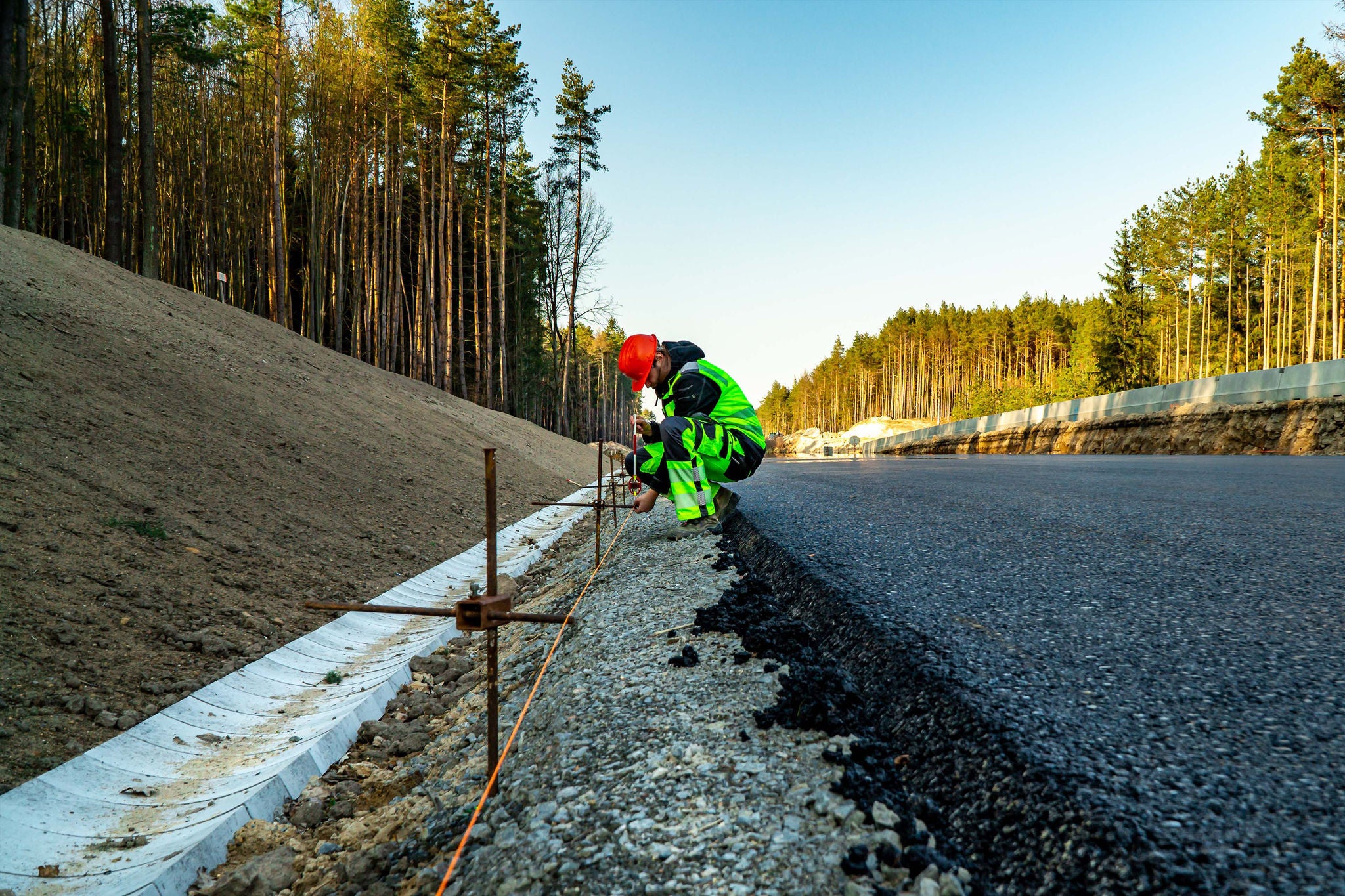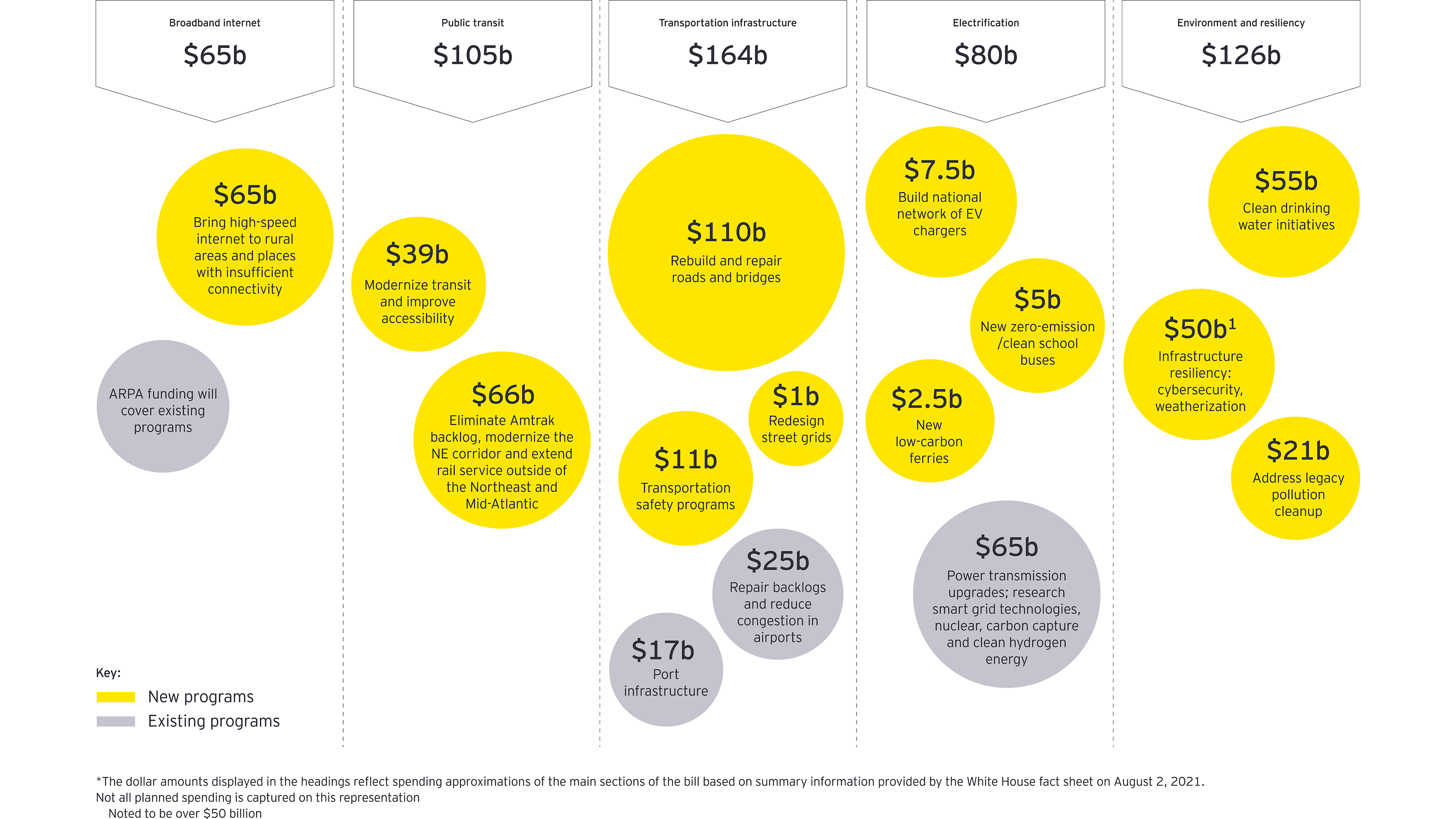So how do we make dig once actually happen? The Brookings Institution suggests that to effectively make any government program succeed, there must be two sets of actors. One must articulate the strategy and vision and brings stakeholders together to solve a big problem. The other actor must make sure the math works, corners are not cut, and results are achieved.⁷
Below, we provide six tactical approaches to achieve the benefits of dig once.
1. Focus strategic decision-making on the future
A solid plan should focus on the technical needs in the near and long term and consider the timing of other funding availability and how these funds will interact with the operations and maintenance of newly deployed assets.
Questions decision-makers should ask include:
- How long do I expect this infrastructure to last?
- Is this where I should be prioritizing my funds?
- Should we be spending more or less on this specific dig?
- Who should be funding this dig?
- When should we time this dig?
- Can we use this dig for multiple purposes (e.g., transportation, power, water, gas and/or other infrastructure)?
- Can an aerial lashing project be reconsidered for a dig?
- Will coordinating a dig across different stakeholders result in deployment delays?
When thinking about a multipurpose dig, decision-makers should consider whether to install empty conduits into the ground — weighing the risk of a broadband conduit becoming unused vs. the risk of having to dig again to install broadband. In terms of financing, decision-makers need to consider whether the government or a private company bears the risk surrounding the use of the conduit.
One key consideration of planning is the desired timeline for achieving certain goals. Oftentimes, achieving desired outcomes faster requires spending additional resources and potentially not coordinating certain digs. As a plan is being developed, decision-makers should evaluate the balance of when to achieve certain outcomes and what resources are necessary to do so.
2. Coordinate, coordinate, coordinate
With the unprecedented amount of federal funding going to states through the BIL, there is an opportunity to build the digital and physical infrastructure for the future. State and local offices need to be engaged with all relevant parties to drive the best outcome for constituents.
Effective communications and rigorous program management are key to using capital and resources effectively. During the planning phase, it is important to understand what interstate and county agencies are responsible for certain actions. A centralized program manager can synchronize the initiatives and track progress while also coordinating communication with all parties. Representative Anna Eshoo (D-Calif.) has proposed designating a broadband coordinator at the state level,⁸ but our teams believe this can also be expanded for coordinating digs at the county and city levels. Broadband offices have opportunities to partner with many departments.
These excavations should also be coordinated with the private sector. Evaluate using external partners and contractors, as some grant funding streams allocate funds for state, county and city to augment their staff. Coordinating efforts across agencies and in advance with bureaus of land management will reduce the delays in permitting. Permitting is a complicated and time-consuming exercise that only gets exacerbated if not considered in a collaborative framework. Additionally, other organizations, including government, private sector partners and nonprofits, may have an aligned interest and can partner to advance the available infrastructure.
3. Require better construction
During excavations, better construction requirements can help facilitate dig once, including joint-use trenches,⁹ microtrenching¹⁰ and easy access to fiber conduits.¹¹
Joint-use trenches are not only built for broadband; they can also be used for all utilities to share the same trench or conduit. If involved partners coordinate the requirements to share a trench for current and future utilities to be installed, this could reduce the need to excavate multiple times.
Microtrenching is another technique suggested by the FHWA to achieve dig once. It has been estimated that microtrenching can take 20% of the time, 33% of the cost and far less manpower to dig.¹²
Manholes or pull boxes allow easy access to fiber conduits and provide the ability to maintain and upgrade fiber and other infrastructure without the need for additional digging. Manholes at consistent intervals were also suggested by Representative Anna Eshoo (D-Calif.) and former Representative David McKinley (R-Was.).¹³
Throughout the construction process, it is important to build in protection to maintain the conduits. According to the FHWA, benefits diminish when the conduit becomes damaged.¹⁴
4. Provide public maps
Maps showing future planned digs help broadband and other utility providers identify opportunities for installing infrastructure that minimizes the number of digs.
For example, the state of Iowa has a live map that shows where the Iowa Department of Transportation (Iowa DOT) intends to dig in the next five years to build structures and highways.¹⁵ Utility providers interested in installing broadband infrastructure in connection with any state construction projects can email the Iowa DOT directly. Idaho has also adopted a similar approach showing the next six years of state construction project planned digs.¹⁶
Indiana has taken a different approach by establishing “broadband corridors” along major highways, state roads and toll roads and then providing public maps showing where the broadband corridors are available and the leasing rates for telecom companies interested in accessing these corridors.¹⁷
5. Adopt ordinances
Other states and, more specifically, municipalities that authorize digging permits have passed rules to require certain levels of coordination and types of construction. When implemented correctly, this can lead to reducing the number of excavations by potentially combining the other leading practices.
As of July 2020, 16 states had dig-once policies.¹⁸ The improvement in broadband availability in Iowa can be partially attributed to its policy requiring the Office of the Chief Information Officer to lead and coordinate the installation of new conduits and coordinate with public and private entities to ensure the opportunity is provided to others for any state-funded construction project.¹⁹
Local municipality ordinances generally cover local roads and last-mile delivery of broadband and other utilities. In 2011, the City of Chicago announced a new requirement to better coordinate construction projects and street repairs between the Department of Water Management and the Chicago Department of Transportation (Chicago DOT).²⁰ This program, managed by the Chicago DOT’s Project Coordination Office, saved over $10 million in 2012. In 2013, the city expanded the scope of the coordination to also include utilities.²¹
The City of San Francisco takes a similar approach, but the program is managed through its Department of Public Works. Twice a year, each utility and municipal excavator is required to submit its five-year plans for all major work anticipated to be done in the public right-of-way. The Department will then determine if there are opportunities for coordination and will direct the excavators to work together to minimize the total period of construction before a permit is awarded. Any permit application with plans to install underground conduits requires the Department of Technology’s approval. Any planned dig will provide the Department of Technology an opportunity to install broadband infrastructure or a conduit.²²
6. Work with responsible contractors and subcontractors
When selecting teams of contractors and subcontractors, one important criterion is finding a responsible team that you can trust to get the job done correctly. Occasionally, contractors will push the responsibility to subcontractors to perform the dig and install the telecommunications infrastructure. However, if the subcontractors do not perform checks for what is underground or do proper due diligence, it could damage utilities or other underground infrastructure and drive costs up.
A system can keep all teams fully responsible and accountable for a given project. First, our teams recommend communicating to the contractor that the contractor and subcontractors will be held jointly responsible for getting the job done correctly. It should be made clear that a contractor cannot fully offload its responsibility by subcontracting certain parts of the project. Second, our teams recommend designating an internal agency responsible for auditing contractors, confirming they obtained a permit and performed proper due diligence.







